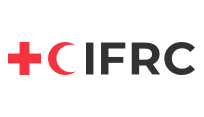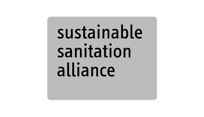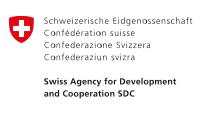Plastic recycling transforms homogeneous plastic types through thermal modification and re-moulds them into new recycled items of various shapes and functions. In humanitarian settings, it is likely to be limited to small and non-industrial scales and requires expert knowledge to ensure adequate product quality and to prevent occupational, public health and environmental risks.

Homogeneous and recyclable plastic waste – such as high-density polyethylene or polypropylene – can be recovered and used to replace virgin materials in the production of new plastic items. During recycling, the material properties are maintained and thermal modification is used to mould new items of similar value; the recovered plastic waste is sorted into homogenous plastic types, cleaned and shredded into flakes. Flakes are heated up to specific temperatures, extruded into long threads and cut into granules. Granules are the base for any plastic recycling and facilitate the feeding of different moulding machines. Safe plastic recycling requires expert knowledge, otherwise, it can lead to the release of microplastics and the formation of toxic fumes, causing occupational safety public health and environmental risks.
Design Considerations
Plastic recycling must produce a useful end product and give the highest consideration to occupational safety X.4 and the protection of public health and the environment. It should focus on producing items that are not available in local markets to prevent market distortions. For safety reasons, children’s toys, food containers or load-bearing items should not be produced. Outdoor applications should be avoided as products are unlikely to be resistant to UV light. In humanitarian settings, plastic recycling is typically confined to the production of small and non-industrial scale items and manual or hydraulic extrusion, injection and compression mouldings. It must use only homogeneous recyclable plastic types, as processing temperatures vary for each type and overheating them can generate toxic fumes. Dirt and impurities in the plastics must be prevented as they affect the final product quality. Differentiating between plastic types might be difficult, especially if Resin Identification Codes are no longer visible. Low-density polyethylene is less often industrially recycled so it might be available for recycling by humanitarian actors. Composite materials containing different plastic types or other materials cannot be recycled; they might only be used for plastic upcycling T.7 or downcycling T.8.
Materials
Low-tech plastic recycling often uses manual sorting and cleaning with water. Shredders are required to produce flakes, extruders with water baths and rotating blades to produce granules and moulding equipment to produce the end products. Extrusion moulding can be used to generate long items with a consistent shape along the product, such as bar or beam-shaped items. Injection moulding can produce various shapes through the injection of plastic into negative moulds made from steel. Compression moulding produces heavier and bulkier items by pressing melted plastic into forms.
Applicability
If a local recycling sector exists, recyclable plastics must be handed over to them U.1, to avoid the market being distorted by humanitarian interventions X.5. Even if handed over for free, SWM projects can still reduce their costs by handling smaller waste amounts. The suitability and feasibility of recycling by humanitarian actors must be thoroughly assessed. Due to the complexity of the process, it is more appropriate in stable contexts of recovery, protracted or development. Humanitarian actors are unlikely to have the relevant expertise, so close engagement with specialist organisations or the private sector is necessary. The public health and environmental impacts of production and the end product must be evaluated. Plastic recycling should not be used solely for the sake of reducing waste amounts, as the reduced disposal quantities might be low. The incentives are the creation of livelihood opportunities and the production of useful items.
Operation and Maintenance
Thermal processes must take place under controlled temperatures suitable for the properties of the plastic being processed. Plastic recycling uses a lot of electricity which limits its application to locations with a steady and reliable energy supply. The equipment can be sensitive to harsh environmental conditions such as dust, heat or humidity and operators must be thoroughly trained.
Health and Safety
Plastic recycling must always use only homogenous and well-cleaned recyclable plastic. Processing mixed plastics can generate poisonous fumes. Facilities must prevent the release of microplastics and toxic fumes into the environment. Workers are required to wear personal protective equipment and need to be trained in occupational health and safety X.4. Items produced from recycled plastic must be thoroughly tested to ensure that they are of adequate quality and do not pose a risk to end users.
Costs
Significant costs are incurred by adequate and safe processing facilities, the procurement and maintenance of equipment, and electricity needs. Assuming non-industrial production in humanitarian settings, the process is likely to lead to limited production numbers and items with a low sale value. Financial sustainability is challenging for plastic recycling in humanitarian settings. Savings in SWM costs by recycling plastics are unlikely to outweigh processing costs.
Social Considerations
Humanitarian interventions must avoid establishing parallel plastic processing facilities, creating competition with private sector actors and distorting local markets. Plastic recycling requires the operation of sophisticated equipment, for which the capacity might not exist in humanitarian settings and remote locations. Communities might not be aware of the public health and environmental risks of plastic recycling and the risk of using poor-quality end products.
Key Decision Criteria
Input Products
Plastics
Output Products
Products from Processed Plastic
Response Phase
Application Level
Management Level
Space Required
medium
Technical Complexity
high
Objectives & Key Features
Small and non-industrial scale processing of recovered homogeneous plastic, Waste diversion from disposal
Strength & Weakness
- Possible treatment option for recyclable plastics which do not have an existing local market
- Can help to sensitise communities for better waste handling
- Can provide raw materials for livelihood projects or local economies
- Requires expert knowledge unlikely to be available among humanitarian actors
- Sub-standard implementation can create occupational, public health and environmental risks
- Financial sustainability is highly unlikely in humanitarian settings






